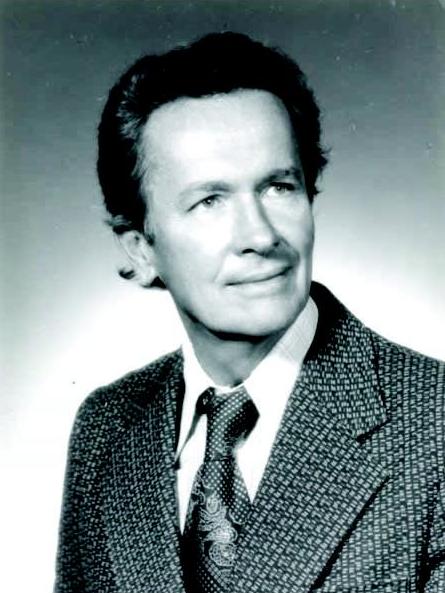Howard Claassen
Howard Claassen was born into a German Mennonite family and community in Hillsboro, Kansas, where he attended Tabor College and met his wife, Esther Wiebe. He graduated from Bethel College in Newton, Kansas, obtained his Ph.D. in Physics at the University of Oklahoma, and did post-doctoral studies at Ohio State University. His specialty was in Raman spectroscopy and his research, teaching, and other contributions made him one of Wheaton College's most famous science professors. During his years at Wheaton College, Dr. Claassen conducted research on "inert" gases at Argonne National Laboratory. On a two-year leave there in the early 1960s, he was the leader of a group that was the first to obtain a simple (two-element) compound of xenon, leading to a change in the name of inert gases in many textbooks to noble gases. By mixing xenon and fluorine at high temperature, outer electrons in the filled shells of xenon atoms were raised to a higher energy level where they could react with fluorine to produce xenon tetrafluoride (XeF4). The result was in the form of clear crystals, which were featured on the cover of the Journal of the American Chemical Society when the discovery was published in September of 1962. For this work Dr. Claassen was named Chicago Scientist of the Year and nominated for a Nobel Prize. He was awarded a Guggenheim Fellowship in 1966 to do research at Hebrew University in Jerusalem. He published many scientific papers and a 1966 book entitled The Noble Gases. Howard Claassen was a humble and dedicated Christian with a deep concern for the poor. He was the founder of the Human Needs and Global Resources (HNGR) program at Wheaton. He was a distinguished physics teacher and researcher at Wheaton College from 1952 to 1980, serving as Chairman of the Physics Department and Science Division for much of that time and awarded status of Emeritus Professor of Physics. After his retirement, he designed and built his own solar home in Oregon. He moved to Tacoma in 1989, where he was active in the University Place Presbyterian Church and worked for ten years in carpentry and plumbing for Habitat for Humanity. He had a son and two daughters; his son is a research physicist like his father. Howard Claassen died on December 27, 2010, at his home in Tacoma, Washington. |
